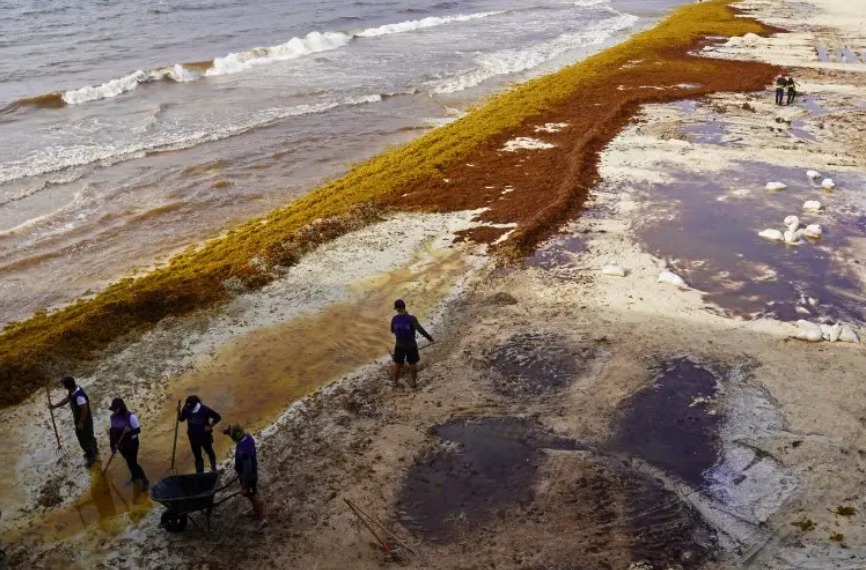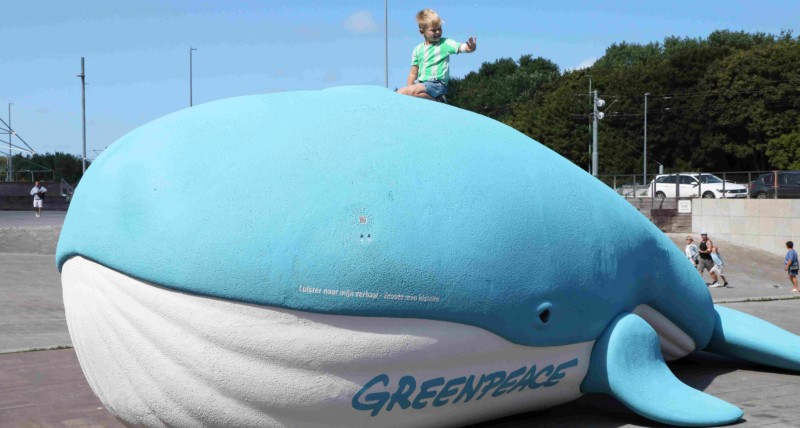The recent United Nations Ocean Conference in Nice, France — which we attended alongside global leaders — delivered notable achievements in its mission to address the growing threats facing our seas, from pledges to reduce toxic runoff to new funding commitments for ocean-based economies. But as UN Special Envoy for the Ocean Peter Thomson noted in his closing remarks: “What matters most is not what happens at the conference, but what happens afterward.”
So, what needs to happen now? The good news is that we have many tools. Science and decades of experience have shown us what works. We know how to restore coral reefs, manage fisheries to produce more food and income, and prevent untreated sewage and fertilizers from flowing into the sea. This is not a crisis of complexity. It’s a crisis of implementation.
What’s missing is broad participation and a focus on clear, immediate, and achievable actions. Heads of state, ministers, NGOs, and scientists showed up in force in Nice. But to turn bold commitments into lasting results, we also need more business leaders at the table. This is an ocean planet. And every business — whether they realize it or not — depends on the biodiversity, food systems, and maritime trade routes the ocean sustains. If the ocean fails, we all fail.
That’s why the private sector must play a role — not just as funders or advocates, but as partners and engines for scalable solutions. We need more public-private partnerships that can help turn proven ocean solutions into tangible outcomes. We’ve seen this work through organizations like Friends of Ocean Action, which brings together leaders from all sectors to accelerate ocean solutions and track progress toward global goals, and the Florida Keys Environmental Coalition, which works on the ground to protect marine ecosystems and improve water quality in one of the most vulnerable coastal areas in the U.S.
We are also inspired by a rising generation of “ecopreneurs” aiming to solve ocean problems while generating profit. At the Blue Economy and Finance Forum in Monaco — held ahead of the UN Ocean Conference — public and private investors pledged $10 billion in new “blue finance” to further develop the rapidly growing ocean economy. The 1000 Ocean Startups coalition, a global network of incubators, accelerators, and investors, has already raised over $4 billion in capital and is halfway to its goal of funding 1,000 ocean startups tackling challenges like seaweed farming, microplastic filtration, and wind-powered shipping.
We previously outlined a simple plan to restore coral reefs globally. Those same principles apply across the marine agenda. We believe progress can be made by the next UN Ocean Conference, scheduled for 2028, by focusing on the following 10 steps:
1. Strengthen U.S. fisheries by ending industrial-scale reduction fishing and pelagic trawling for forage fish
These small fish feed larger species and entire ocean ecosystems. A handful of industrial operations are carving away the base of our U.S. coastal economy’s food chain, hauling in hundreds of thousands of tons — not for food, but to be ground into fishmeal and oil, much of which is exported. Eliminating these practices and managing forage fish at ecologically healthy levels will protect food webs, support fishers, and improve U.S. marine resilience.
2. Solve the Tijuana River crisis
For years, billions of gallons of raw sewage and industrial waste from Mexico have flowed into U.S. waters off San Diego, harming ecosystems and public health. Solutions — including floodgate installations and stricter oversight of Mexican treatment plants — are well understood. This is a test of will, not capacity.
3. Make ocean polluters pay
The old notion that “dilution is the solution to pollution” no longer holds in an age of untraceable industrial and pharmaceutical waste. We need a new approach that stops pollutants at the source and publicly discloses who’s discharging what, and where. This means clear rules, transparent reporting, and a strong “polluter pays” principle.
4. Take a new, balanced approach to U.S. marine protected areas
Americans cherish our national parks on land — and we need the same for the living ocean. Well-designed ocean parks can boost tourism, extend U.S. geopolitical presence, and replenish fish stocks. But real work begins after protection is declared. At Papahānaumokuākea — the largest U.S. ocean park — public-private partnerships support sacred site access and fund cleanups that have removed nearly one million pounds of plastic pollution and debris from coral reefs.
5. Expand marine debris efforts launched under the Trump administration
Targeted cleanups and reductions in plastic pollution and other debris have brought real gains to fisheries, wildlife, and U.S. communities reliant on clean beaches and coasts. This mandate should be renewed and scaled up.
6. Restore America’s coastal ecosystems
Restoration is critical for mangroves, seagrass beds, coral reefs, and salt marshes — natural defenses against hurricanes. This includes the Mangrove Breakthrough, supported by Salesforce. These are among the most cost-effective ways to protect coastal infrastructure from worsening storms.
7. Shrink the Gulf’s dead zone
Nutrient runoff creates massive low-oxygen zones that choke Gulf fisheries. Helping farmers adopt proven techniques to reduce and capture pollution before it hits rivers and oceans is a win for both farmers and fishers.
8. Harness American innovation to avoid ocean mining
With entrepreneurial support and tech advances, we can reduce reliance on foreign critical minerals and reserve ocean resources for defense-critical use only. That includes U.S. national lab and private-sector innovations in battery technologies using more abundant materials like iron over cobalt. Success in this area would reduce or eliminate the need to mine the ocean — a practice that threatens U.S. fisheries, seafood safety, and government budgets.
9. Tackle the sargassum crisis
Massive seaweed blooms are now affecting Florida, Texas, Puerto Rico, and the U.S. Caribbean. Coordinated cleanup and reduced nutrient runoff near West Africa and the Amazon — major source regions — are key to controlling this rising threat.
10. Stop the sewage killing U.S. coral reefs
From Florida to Hawai‘i, coral reefs are collapsing in part due to leaking septic systems, aging infrastructure, and unregulated runoff — poisoning ecosystems that support tourism, fisheries, and coastal communities.
On all these fronts, we believe in one core principle: focus on what’s doable and measurable. With smart, commonsense steps, we can ensure thriving oceans that support American jobs, coastal communities, and national security — while restoring life to some of the planet’s most vital and awe-inspiring ecosystems.



